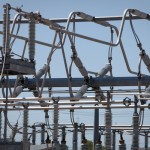Here’s One Solution to Texas’ Power Woes, And it Could Cost You Nothing
As we’ve been chronicling over the past few months, Texas is in a bit of a bind when it comes to power. There are more and more people, and fewer and fewer power plants. While natural gas prices stay low, that means power companies in Texas have to charge less (here’s a good explainer on how that all works), so there’s little incentive to build new plants.
One motivation has been to raise the prices generators can charge when the grid nears capacity, or peak demand, like it does on some of these hot August days. That’s when power companies make most of their profits.
But there’s another solution. And according to some observers, it has an attractive price tag: free.
It’s called demand response. A new analysis today from the Environmental Defense Fund suggests it could provide an innovative way out of Texas’ looming power crisis.
First let’s look at how bad things could get in the coming years. Texas has a goal of having 13.75 percent more power available than consumers need. That’s called a reserve margin. And setting that target means low chances of a strained grid leading to blackouts. By 2014, Texas’ reserve margin could be below ten percent, and a year after that under seven percent.
Texas has the lowest reserve margin in the country, as you can see in this map from the Energy Information Administration (EIA):

Map by Energy Information Administration
Texas has the lowest reserve margin in the country, and is the only place not meeting its target.
Moreover, it’s the only state that isn’t meeting reserve margin goals. Other grids in surrounding states have reserve margins six to sixteen percent higher than targets.
This is where demand response could come in. Basically, it means getting users on board to voluntarily conserve and power down at the right times. (Here’s a great explainer on demand response from How Stuff Works.) You could even end up getting paid not to use power. In essence, you “build” more power generation by requiring less of it.
And in June the Brattle Report said demand response could get Texas’ reserve margin — that amount of excess power available to avoid blackouts — up to fifteen percent.
Marita Mirzatuny of the Environmental Defense Fund breaks down what that would mean:
So if Texas met this demand response goal of 15 percent it would be enough to cover our reserve margin of 13.75 percent and then some. Without new power plants. Without any new generation capacity at all.
Even better is that unlike other mechanisms that do not benefit consumers financially such as the price cap increase, demand response and other demand side resources can provide large gains for consumers. Not only do they encourage reductions in energy consumption and thus energy bills, but because there is an added value in providing that “negawatt” capacity back into the system, customers are compensated.
Demand response has worked in other markets, like PJM, a grid operator in the Midwest and Mid-Atlantic region. PJM used demand response to supply nine percent of peak demand last year, according to Mirzatuny. Residential customers in that market received $20 million overall in payments for curbing their use during peak demand.
But in the Texas grid, managed by the Electric Reliability Council of Texas (ERCOT), only two percent of the peak demand power comes from demand response. However, that demand response did help ERCOT avoid rolling blackouts during the summer of 2011.
But this could all be changing soon. ERCOT approved a pilot project for demand response in late June. Here’s how the Council describes it:
“The 30-minute Emergency Response Service (ERS) pilot project will allow eligible participants a half hour to respond to ERCOT requests to reduce their electric use. The program is open to electric users — either as individual customers or as part of an aggregated group of consumers — who can reduce demand on the ERCOT grid by at least 100 kilowatts, about the amount 20 homes use during peak demand.”
And as Mirzatuny notes, the Public Utility Commission in May approved a rule change that will allow the Texas grid to try more pilot projects. Mirzatuny says that “we are headed down the right path and finally waking up the innovations needed in the energy market.”
So demand response could provide the extra power we need during peak demand without having to charge higher prices.
You can read more about the energy crunch in Texas at our ERCOT topic page.





